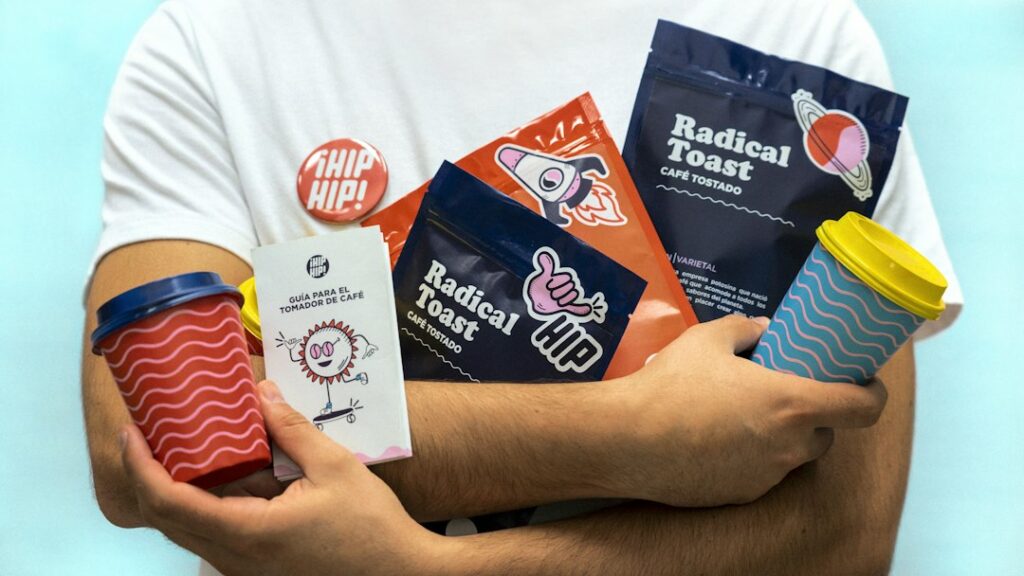
Creating a Community, Not Just a Customer Base: Branding Strategies That Connect
Community building plays a crucial role in branding as it helps businesses establish a loyal customer base and increase brand awareness. In today’s competitive market, it is not enough for businesses to simply sell products or services. They need to create a sense of belonging and connection with their audience. Building a community allows businesses to foster relationships with their customers, gain valuable insights into their needs and preferences, and create a strong brand identity that resonates with their target audience.
Key Takeaways
- Building a community is crucial for successful branding.
- Understanding your target audience is the first step to building a community.
- Creating a brand identity that resonates with your audience is essential.
- Leveraging social media is an effective way to build a strong brand presence.
- Encouraging user-generated content fosters community engagement.
Understanding Your Target Audience: The First Step to Building a Community
Understanding your target audience is the first step in building a community. By gaining insights into their needs, preferences, and pain points, businesses can tailor their products, services, and messaging to meet their audience’s expectations. Market research is an essential tool for understanding your target audience. It involves collecting and analyzing data about your customers, competitors, and industry trends.
To conduct effective market research, businesses can use various methods such as surveys, focus groups, interviews, and social media listening. Surveys allow businesses to gather quantitative data about their audience’s demographics, preferences, and purchasing behavior. Focus groups and interviews provide qualitative insights into their motivations, pain points, and desires. Social media listening involves monitoring conversations on social media platforms to understand what people are saying about your brand and industry.
Creating a Brand Identity That Resonates with Your Audience
Creating a brand identity that aligns with your audience’s values and interests is crucial for building a community. A strong brand identity helps businesses differentiate themselves from competitors and build an emotional connection with their audience. To create a brand identity that resonates with your audience, you need to understand their values, interests, and aspirations.
Start by defining your brand’s mission, vision, and values. What do you stand for? What are your core beliefs? Once you have a clear understanding of your brand’s identity, you can start crafting your messaging, visual elements, and tone of voice to align with your audience’s preferences. For example, if your target audience is environmentally conscious, you can emphasize your brand’s commitment to sustainability in your messaging and use eco-friendly packaging.
Several brands have successfully created a strong brand identity that resonates with their audience. Patagonia, an outdoor clothing company, has built a brand identity centered around environmental activism. They have a strong commitment to sustainability and donate a portion of their profits to environmental causes. This resonates with their audience of outdoor enthusiasts who care about protecting the planet.
Leveraging Social Media to Build a Strong Brand Presence
Social media plays a crucial role in community building as it allows businesses to engage with their audience and build a strong brand presence. With billions of people using social media platforms like Facebook, Instagram, and Twitter, businesses have the opportunity to reach a wide audience and connect with them on a personal level.
To leverage social media for community building, businesses need to create engaging content that resonates with their audience. This can include informative blog posts, entertaining videos, inspiring quotes, and behind-the-scenes glimpses into the brand’s culture. It is also important to actively engage with your audience by responding to comments, messages, and mentions. This shows that you value their input and are committed to building a relationship with them.
Encouraging User-Generated Content to Foster Community Engagement
User-generated content (UGC) is content created by your audience that promotes your brand. It can include customer reviews, testimonials, social media posts, and blog articles. Encouraging UGC is an effective way to foster community engagement as it allows your audience to become active participants in your brand’s story.
UGC has several benefits in community building. Firstly, it helps build trust and credibility as people are more likely to trust recommendations from their peers than traditional advertising. Secondly, it creates a sense of community as people feel a sense of belonging when they see others sharing their experiences with your brand. Finally, UGC can help increase brand awareness as people share their positive experiences with their own networks.
Several brands have successfully encouraged UGC. Starbucks, for example, launched the “White Cup Contest” where customers were encouraged to decorate their Starbucks cups and share their designs on social media. This campaign generated thousands of user-generated designs and created a sense of community among Starbucks customers.
Hosting Events and Meetups to Bring Your Community Together

Hosting events and meetups is an effective way to bring your community together and foster engagement. Events provide an opportunity for your audience to connect with your brand on a personal level and meet like-minded individuals who share their interests.
When planning events, it is important to consider your audience’s preferences and interests. What type of events would they be interested in attending? Would they prefer workshops, networking events, or social gatherings? It is also important to choose a venue that is easily accessible and can accommodate the number of attendees.
During the event, make sure to provide opportunities for attendees to engage with your brand and each other. This can include interactive activities, guest speakers, and networking sessions. Encourage attendees to share their experiences on social media using a branded hashtag to extend the reach of the event beyond the physical location.
Partnering with Influencers and Thought Leaders to Expand Your Reach
Partnering with influencers and thought leaders is an effective way to expand your brand’s reach and build credibility. Influencers are individuals who have a large following on social media platforms and can influence the purchasing decisions of their audience. Thought leaders are experts in their industry who have established themselves as trusted sources of information.
When choosing influencers or thought leaders to partner with, it is important to consider their relevance to your brand and audience. Look for individuals who align with your brand’s values and have a genuine interest in your products or services. Collaborate with them on content creation, events, or product launches to leverage their influence and reach.
Several brands have successfully partnered with influencers and thought leaders. Nike, for example, collaborated with professional athletes like Serena Williams and Cristiano Ronaldo to promote their products. These partnerships helped Nike reach a wider audience and build credibility as a brand trusted by top athletes.
Providing Exceptional Customer Service to Build Trust and Loyalty
Providing exceptional customer service is crucial for building trust and loyalty with your audience. When customers have a positive experience with your brand, they are more likely to become loyal advocates who recommend your products or services to others.
To provide excellent customer service, it is important to be responsive, empathetic, and proactive. Respond to customer inquiries and complaints in a timely manner and go above and beyond to resolve any issues they may have. Train your customer service team to be knowledgeable about your products or services so they can provide accurate information and recommendations.
Giving Back to the Community to Demonstrate Your Brand Values
Giving back to the community is not only a way to make a positive impact but also an opportunity to demonstrate your brand’s values and build a positive reputation. When businesses engage in philanthropic activities, they show that they care about more than just profits and are committed to making a difference in the world.
There are many ways businesses can give back to the community. This can include donating a portion of their profits to charitable organizations, volunteering their time and resources, or partnering with non-profit organizations on initiatives that align with their brand’s values. By giving back, businesses can create a sense of purpose and inspire their audience to support their brand.
Several brands have successfully given back to the community. TOMS, for example, has a “One for One” model where for every pair of shoes purchased, they donate a pair of shoes to a child in need. This initiative has not only helped improve the lives of millions of children but also created a strong brand identity centered around social responsibility.
Measuring the Success of Your Community Building Efforts and Continuing to Evolve Your Brand Strategy
Measuring the success of your community building efforts is crucial for evaluating the effectiveness of your brand strategy and making informed decisions. By tracking and analyzing metrics, businesses can gain insights into their audience’s engagement, brand sentiment, and purchasing behavior.
There are several metrics businesses can track to measure the success of their community building efforts. This can include social media engagement metrics such as likes, comments, and shares, website traffic, customer satisfaction scores, and sales data. By analyzing these metrics, businesses can identify areas for improvement and make data-driven decisions to optimize their brand strategy.
It is also important to continuously evolve your brand strategy to meet the changing needs and preferences of your audience. As trends and technologies evolve, businesses need to adapt their messaging, channels, and tactics to stay relevant. Regularly review your market research, track industry trends, and listen to feedback from your audience to identify opportunities for innovation and growth.
Community building is a crucial aspect of branding that helps businesses establish a loyal customer base and increase brand awareness. By understanding your target audience, creating a brand identity that resonates with them, leveraging social media, encouraging user-generated content, hosting events, partnering with influencers, providing exceptional customer service, giving back to the community, measuring success, and evolving your brand strategy, businesses can build strong communities that support their brand’s growth and success. Prioritizing community building in your marketing strategy is essential in today’s competitive market.
FAQs
What is the article about?
The article is about branding strategies that focus on creating a community of loyal customers rather than just a customer base.
Why is creating a community important for a brand?
Creating a community helps to build a strong relationship between the brand and its customers, leading to increased loyalty, advocacy, and sales.
What are some examples of branding strategies that focus on community building?
Some examples include creating a brand personality that resonates with customers, engaging with customers on social media, hosting events and meetups, and offering exclusive perks and rewards to loyal customers.
How can a brand create a strong brand personality?
A brand can create a strong brand personality by defining its values, mission, and vision, and communicating them consistently through its messaging, visuals, and interactions with customers.
What are some benefits of engaging with customers on social media?
Engaging with customers on social media can help to build a sense of community, increase brand awareness, and provide valuable feedback and insights into customer needs and preferences.
How can a brand offer exclusive perks and rewards to loyal customers?
A brand can offer exclusive perks and rewards to loyal customers by creating a loyalty program, offering personalized discounts and promotions, and providing early access to new products or services.







Responses